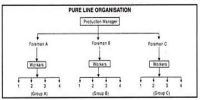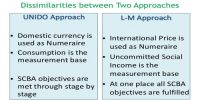The cash conversion cycle (CCC) is one of several measures of management effectiveness. It measures how fast a company can convert cash on hand into even more cash on hand. The CCC does this by following the cash as it is first converted into inventory and accounts payable (AP), through sales and accounts receivable (AR), and then back into cash. Generally, the lower this number is better for the company. Although it should be combined with other metrics (such as return on equity and return on assets), it can be especially useful for comparing close competitors, because the company with the lowest CCC is often the one with better management. In this article, we’ll explain how CCC works and show you how to use it to evaluate potential investments.
The CCC is a combination of several activity ratios involving accounts receivable, accounts payable and inventory turnover. AR and inventory are short-term assets, while AP is a liability; all of these ratios are found on the balance sheet. In essence, the ratios indicate how efficiently management is using short-term assets and liabilities to generate cash. This allows an investor to gauge the company’s overall health.
If the company sells what people want to buy, cash cycles, through the business quickly. If management cannot figure out what sells, the CCC slows down. For instance, if too much inventory builds up, cash is tied up in goods that cannot be sold this is not good news for the company. To move out this inventory quickly, management might have to slash prices, possibly selling its product at a loss. If AR is handled poorly, it means that the company is having difficulty collecting payment from customers. This is because AR is essentially a loan to the customer, so the company loses out whenever customers delay payment. The longer a company has to wait to be paid, the longer that money is unavailable for investment elsewhere. On the other hand, the company benefits by slowing down payment of AP to its suppliers, because that allows it to make use of the money longer.
The Calculation – To calculate CCC, you need several items from the financial statements:
- Revenue and cost of goods sold (COGS) from the income statement;
- Inventory at the beginning and end of the time period;
- AR at the beginning and end of the time period;
- AP at the beginning and end of the time period; and
- The number of days in the period (year = 365 days, quarter = 90).
Inventory, AR and AP are found on two different balance sheets. If the period is a quarter, then use the balance sheets for the quarter in question and the ones from the preceding period. For a yearly period, use the balance sheets for the quarter (or yearend) in question and the one from the same quarter a year earlier.
This is because while the income statement covers everything that happened over a certain time period, balance sheets are only snapshots of what the company was like at a particular moment in time. For things like AP, you want an average over the time period you are investigating, which means that AP from both the time period’s end and beginning are needed for the calculation.
Now that you have some background on what goes into calculating CCC, let’s look at the formula:
CCC = DIO + DSO – DPO
Let’s look at each component and how it relates to the business activities discussed above,
Days Inventory Outstanding (DIO): This addresses the question of how many days it takes to sell the entire inventory. The smaller this number is the better.
DIO = Average inventory/COGS per day.
Average Inventory = (beginning inventory + ending inventory)/2
Days Sales Outstanding (DSO): This looks at the number of days needed to collect on sales and involves AR. While cash-only sales have a DSO of zero, people do use credit extended by the company, so this number will be positive. Again, smaller is better.
DSO = Average AR / Revenue per day
Average AR = (beginning AR + ending AR)/2
Days Payable Outstanding (DPO): This involves the company’s payment of its own bills or AP. If this can be maximized, the company holds onto cash longer, maximizing its investment potential; therefore, a longer DPO is better.
DPO = Average AP/COGS per day
Average AP = (beginning AP + ending AP)/2
Notice that DIO, DSO, and DPO are all paired with the appropriate term from the income statement, either revenue or COGS. Inventory and AP are paired with COGS, while AR is paired with revenue.
















